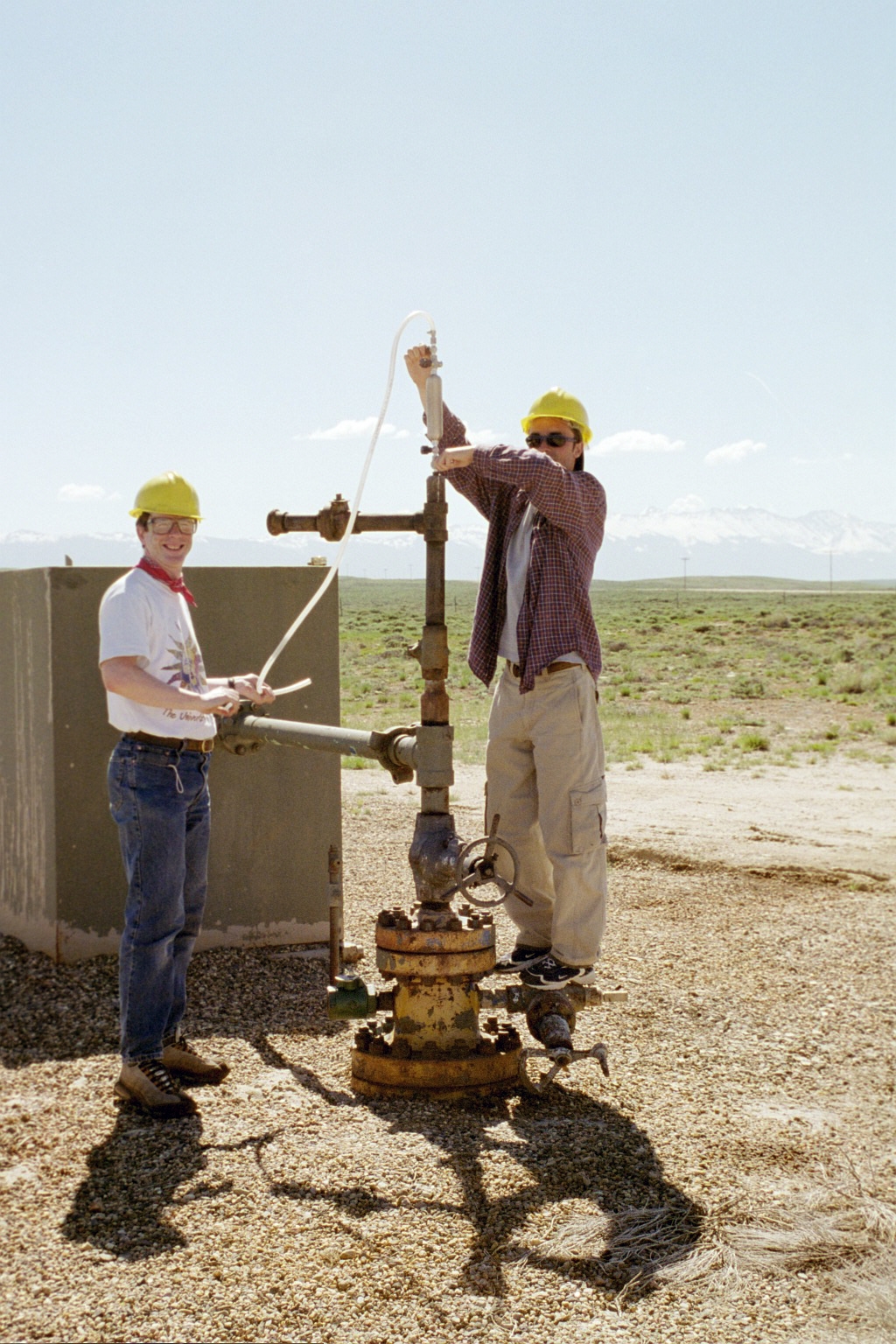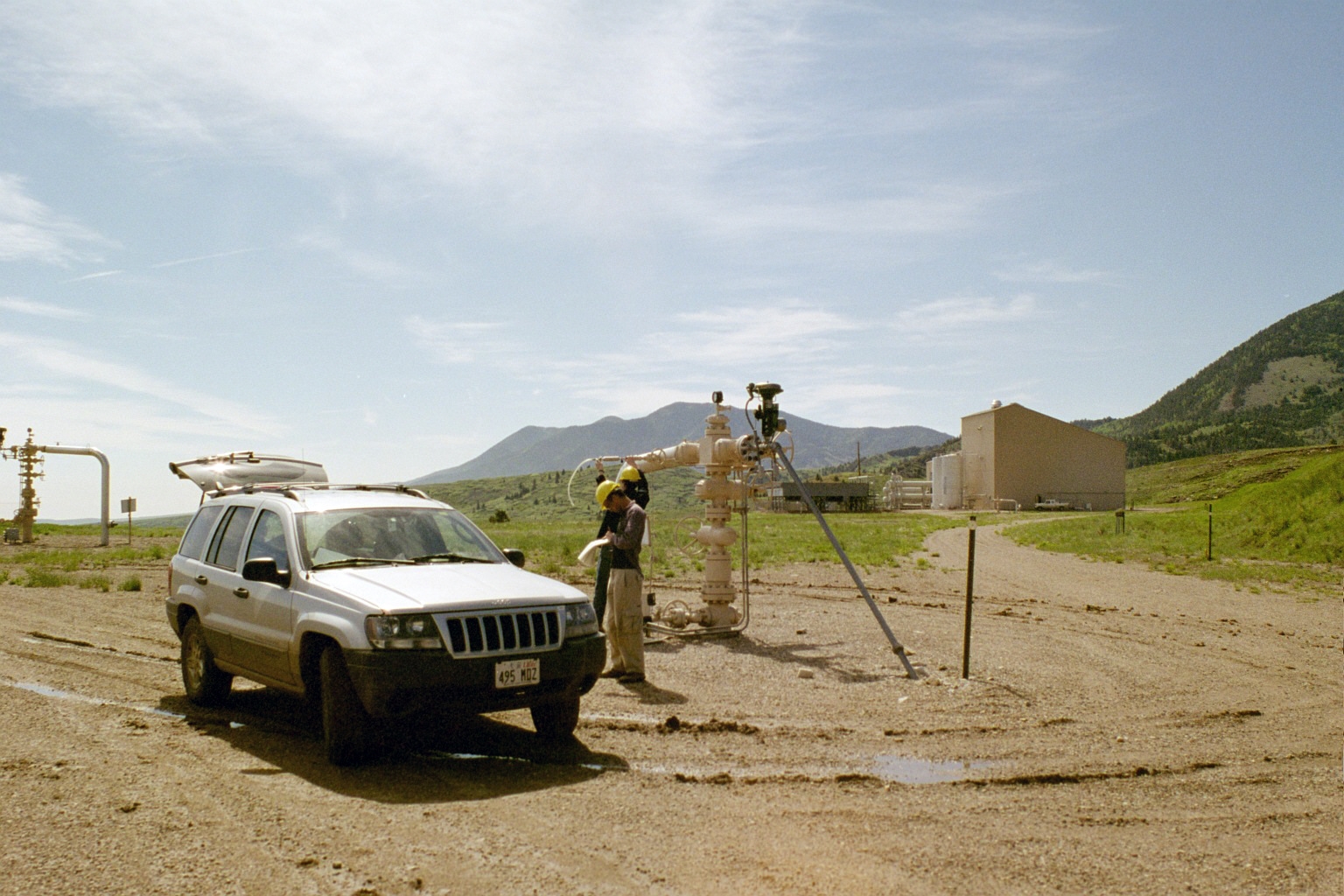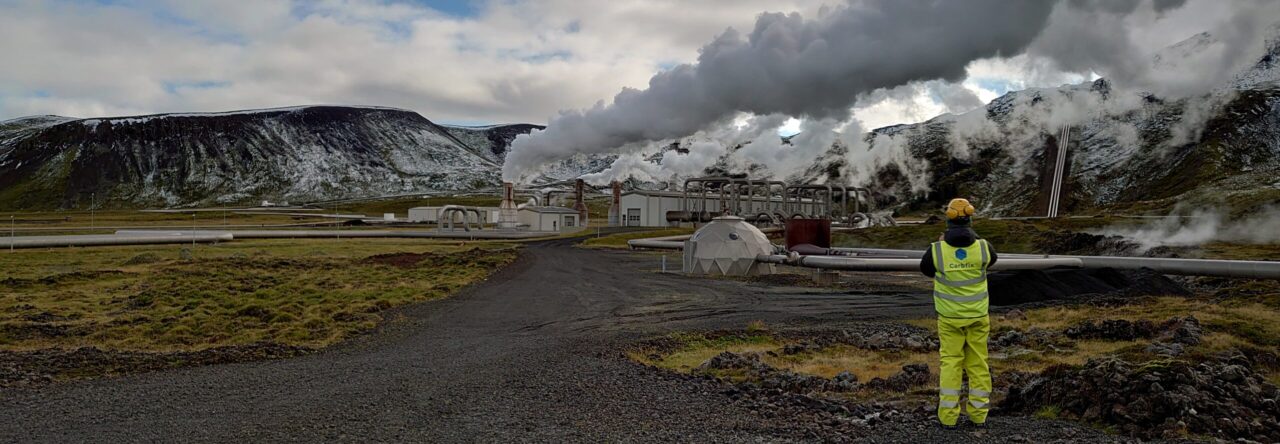Deep Magmatic Degassing and the Colorado Plateau Uplift
I completed my PhD at the School of Earth, Atmospheric and Environmental Sciences at the University of Manchester between October 2002 and March 2006. I wouldn’t say it was all fun but on the whole I enjoyed it and the opportunities it presented to me. If you are interested here is a little bit more about it and some pictures of fieldwork in Colorado.
Background
Subaerial volcanism in mid continental regions is often associated with crustal thinning and rifting. When magma does not reach the surface, it is still at a pressure that enables it to lose it volitiles. The initial stage of volatile loss is dominated by the release of carbon dioxide and associated trace gas species. In a similar fashion to oil and gas this fluid will move up through the crust until it either encounters a trapping structure forming a natural carbon dioxide reservoir, or the groundwater system producing natural carbonated springs and geysers. These sample resources provide a unique window into the volatile content of the mantle. Study of the un-reactive trace gases (noble gases) and the stable isotopes present within this carbon dioxide can provide an understanding of how magmatic fluids are introduced into the crustal system by deep magmatic activity. Additionally, study of the noble gas record will provide an insight into the early Earth history of volatile origin and mantle evolution (Ballentine et al., 2002 Science 296, 1247-1248).
Project aims
The Colorado Uplift area is unique in providing an abundance of gas reservoirs with almost pure magmatic CO2 that can be easily sample. (Caffee et al., 1999 Science 285, 2115-2118). Apart from the research by Caffee et al., indicating a magmatic contribution to the noble gases, no systematic noble gas study had been completed in the region prior to this work. My PhD project aimed to provide an insight into the magmatic degassing processes and the migration and behaviour of CO2 in the subsurface using regional changes in
isotopic ratios such as the CO2/3He and 13C/CO2) (Ballentine et al., 2001 Nature 409, 327-33). I was able to use these tracers to resolve magmatic from crustal CO2 in natural gas reservoirs, CO2 rich springs and geysers associated with the Colorado Uplift. The final stage of the project quantified the contribution from different CO2 sources and identified shallow level transport mechanisms of CO2 in the area.
Field and Laboratory Work
 Specialist collection of CO2 samples from the McElmo Dome, McCallum Dome, St. Johns Dome and Sheep Mountain gas fields was undertaken in May 2003 (see photos below). A second field trip to sample CO2 springs in the Green River area of Utah was undertaken in July 2004. These samples provided a surface contrast to the deeper well gases. Noble gas analysis of all of samples was completed in the state-of-the-art isotope geochemistry laboratory in Manchester. High precision stable isotope of the final suite of samples was undertaken at the University of Toronto.
Specialist collection of CO2 samples from the McElmo Dome, McCallum Dome, St. Johns Dome and Sheep Mountain gas fields was undertaken in May 2003 (see photos below). A second field trip to sample CO2 springs in the Green River area of Utah was undertaken in July 2004. These samples provided a surface contrast to the deeper well gases. Noble gas analysis of all of samples was completed in the state-of-the-art isotope geochemistry laboratory in Manchester. High precision stable isotope of the final suite of samples was undertaken at the University of Toronto.
Right: My supervisor, Chris Ballentine and postdoc Greg Holland sampling well gases at McCallum Dome, northern Colorado, June 2003.
Results
To read about the detailed results of the project please see my Publications page.

Sampling well gases at Sheep Mountain, southern Colorado, June 2003
